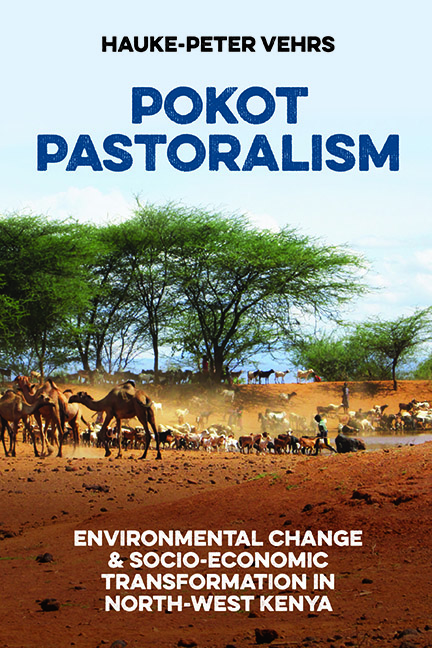Book contents
- Frontmatter
- Dedication
- Contents
- List of Illustrations
- Preface and Acknowledgements
- List of Abbreviations
- 1 Introduction
- 2 East Pokot: A Place and its People
- 3 Pokot Pastoral Livelihoods
- 4 The Paka Community
- 5 Environmental Changes in East Pokot
- 6 Socio-Ecological Transformations in the Agro-Pastoral Highlands
- 7 Ecological Change and Local Livelihoods: Scientific and Pokot Perspectives
- 8 Ecological Invasions: Agents of Socio-Ecological Transformation
- 9 Ecological Challenges and Social Transformations
- Appendix: Lists of Plant Names (Pokot–Scientific and Scientific–Pokot)
- Bibliography
- Index
- Future Rural Africa
4 - The Paka Community
Published online by Cambridge University Press: 16 July 2022
- Frontmatter
- Dedication
- Contents
- List of Illustrations
- Preface and Acknowledgements
- List of Abbreviations
- 1 Introduction
- 2 East Pokot: A Place and its People
- 3 Pokot Pastoral Livelihoods
- 4 The Paka Community
- 5 Environmental Changes in East Pokot
- 6 Socio-Ecological Transformations in the Agro-Pastoral Highlands
- 7 Ecological Change and Local Livelihoods: Scientific and Pokot Perspectives
- 8 Ecological Invasions: Agents of Socio-Ecological Transformation
- 9 Ecological Challenges and Social Transformations
- Appendix: Lists of Plant Names (Pokot–Scientific and Scientific–Pokot)
- Bibliography
- Index
- Future Rural Africa
Summary
Mt Paka is an extinct volcano in the centre of East Pokot, a region characterised by its pastoral livelihoods. As mentioned before, in the nineteenth century the pastoral Pokot were specialised cattle herders who established their territory north of Lake Baringo and in the Kerio Valley. This chapter describes the pastoral livelihoods at Mt Paka in detail in order to provide a better understanding of today's pastoralists. Contrary to stereotyped assumptions, these are not geared exclusively to life with and from livestock, but are characterised by a high diversity of livelihoods. Nevertheless, the focus on a life with cattle, goats, camels and sheep is very clearly visible – on the one hand, for own consumption; on the other hand, for market-oriented production. The following description of Paka pastoral livelihoods also provides a basis for a later comparison with agro-pastoral livelihoods. In this chapter, I focus on describing the household and community structures and relationships and explaining those elements that are particularly important in the daily life of this pastoral community.
The population of the Paka community consists of approximately 500 to 600 people. Fluctuations in population numbers can be explained with seasonal mobility and in- and out-migration of households from the study area. During the main fieldwork from 2013 to 2015, I counted 92 married women, 50 married men, four independent women and 412 children, resulting in a population of 558 people. The official population density in the former Paka/Korossi sub-location is 27.8 people per km2 for the year 2019 (Republic of Kenya, 2019), whereas the average population density in East Pokot has been calculated as 32.8 people per km2 for the same year (Republic of Kenya, 2019). Population numbers in East Pokot have increased strongly over the past 60 years but, as mentioned in Chapter 3, official population figures must also be viewed with caution.
The pastoral people at Mt Paka organise their living in households consisting of the husband and at least one wife living together with children and sometimes other members of the family such as the husband's mother or siblings. Each wife has her own self-built hut and several small shelter huts for the goatlings, and she owns specific usufruct rights for milking certain livestock given at marriage (Sassoon, 1994).
- Type
- Chapter
- Information
- Pokot PastoralismEnvironmental Change and Socio-Economic Transformation in North-West Kenya, pp. 67 - 79Publisher: Boydell & BrewerPrint publication year: 2022



